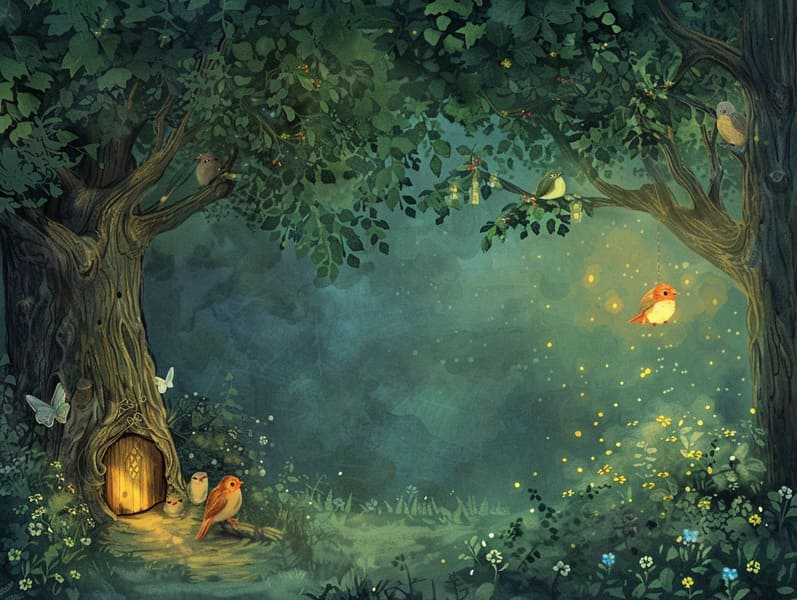Understanding the Legacy of Grimm's Fairy Tales and the Unending Grandeur.
Understanding the Legacy of Grimm's Fairy Tales and the Unending Grandeur.
Blog Article

Famous fairy tales have deep roots. These stories have been relayed from one generation to the next ages before they were ever put on paper. They were born from a variety of backgrounds, including Eastern traditions. They were initially passed along among elders, often carrying themes and messages relevant to the societal norms and beliefs of the time.
Jacob and Wilhelm Grimm, Jacob and Wilhelm (the Grimm brothers), were among the first to compile many of these beloved stories. Their published works, "Grimm's Story Collection," included stories like "Cinder Maid," "The Story of Hansel and Gretel," and "Schneewittchen," which have since become pillars in the world of classic fairy tales. Similarly, H. C. Andersen's fantastical stories, such as "The Mermaid's Tale," and "The Story of the Ugly Duckling," have gained the love worldwide, solidifying their place in the pantheon of timeless fairy tales.
Though they are old, fairy tales remain as impactful as ever, especially as nighttime stories for kids. These charming stories are now available in various formats, including vividly illustrated books, fantastical animations, and online storybooks.
Their ongoing significance can be traced to several delightful features:
Key Lessons: Classic fairy tales often convey important moral lessons. Fairy tales like "The Story of the Boy Who Cried Wolf" teach the importance of being truthful, while "The Story of the Tortoise and the Hare" demonstrate the qualities of resolve and meekness. These stories offer the young clear distinctions between correct and incorrect, molding their moral compass in a subtle yet lasting way.
Empathy and Understanding: Timeless fairy tales frequently illustrate individuals facing difficulties and adversities, provoking young readers to resonate with their struggles and support their triumphs. For instance, "The Tale of Beauty and the Beast" emphasizes the benefit of looking past the exterior to acknowledge the inner spirit of a soul, fostering understanding and awareness.
Cultural Understanding: Many ancient fairy tales are interwoven with the cultural contexts from which they emerged. Engaging with these tales can provide delightful insights into different social structures, building a sense of world appreciation and comprehension.
Fantasy and Imagination: The whimsical elements in classic fairy tales—talking beasts—invigorate children’s creative thoughts. These narratives guide readers to fantasy realms, inspiring fantasy ideas and a sense of astonishment that persists a lifetime.
Timeless fairy tales are not only mesmerizing but also teaching. They work as fascinating tools in enhancing various cognitive and emotional skills in the young. When traditional fairy tales are recited, they enhance verbal skills by showing new word meanings and elaborate sentence structures. This practice also fosters listening abilities and focus, as kids track the narrative, anticipating to see what happens next.
Furthermore, debating the themes and characters of ancient fairy tales can enhance problem-solving abilities and logical thinking. Children are led to pinpoint patterns, predict happenings, and figure out cause and effect. These analyses also help kids convey their thoughts and feelings, nurturing check here their emotional intelligence.
In today’s technological era, the availability of internet fairy tales has made these stories more attainable than ever. Digital sites and mobile apps present ample collections of classic fairy tales that can be explored or listened via anytime, anywhere. Fairy tales read aloud are particularly popular, extending an interactive way for young readers to take part in these magical stories. Read-aloud stories and read-out-loud videos take characters and settings to life, often supported by charming music and background music that elevate the story journey.
The unending appeal of ancient fairy tales lies in their ability to evolve to current times while maintaining their key morals. Contemporary retellings of these fairy tales often show more representative figures and modern settings, making them understandable to today’s audience. However, the central morals of courage, humanity, and righteousness remain unchanged, continuing to impact audiences of all ages.
Timeless fairy tales also offer a sense of peace and recognition. They provide a orderly narrative with a definite beginning, middle, and end, often closing with the finalization of conflicts and the triumph of goodness over badness. This predictability can be solacing for the young, gifting a sense of steadfastness in an inconstant world.
Ancient fairy tales continue to spellbind and coach new generations, maintaining their magic and importance in modern society. As children's bedtime stories, they confer a perfect blend of charm and enlightenment, boosting moral values, empathy, and creativity. The existence of online fairy tales and the in demand status of fairy tales voiced assure that these timeless narratives remain available to new generations.
By preserving and distributing these narratives, we continue to revere the rich tapestry of human imagination and cultural heritage. Whether you are experiencing a artistically illustrated book, browsing a online library, or listening to an read-aloud book, the appeal of classic fairy tales is always within reach. These narratives demonstrate of the everlasting effect of stories and its ability to gather us across eras and regions.
Even if you are viewing a gorgeously illustrated book, perusing a cyber collection, or listening through an sound book, the beauty of ancient fairy tales is always within reach.
These stories demonstrate of the eternal influence of fairy tales and its ability to gather us across generations and cultures, forging a link that charms and informs alike.